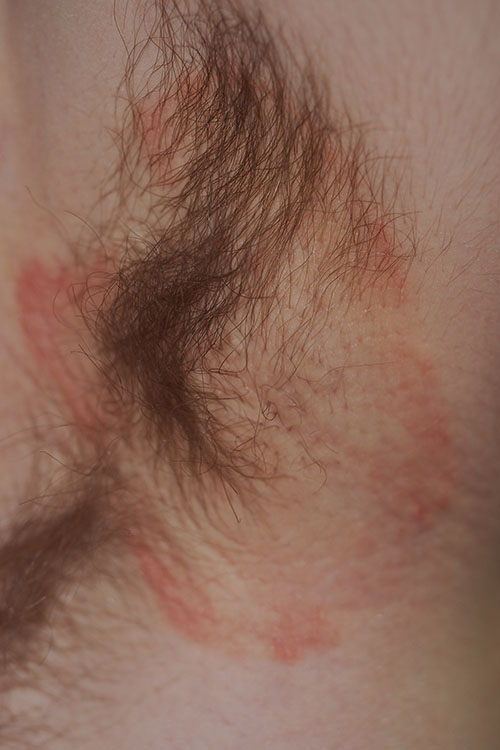Erythrasma
Erythrasma is caused by overgrowth of the normal commensal bacterium Corynebacterium minutissimum. It is characterised by red-brown, well-demarcated patches and plaques. Erythrasma is a flexural rash (occurs in the groin, axillae and toe webs), which may resemble intertrigo, psoriasis or fungal infections. Erythrasma can be distinguished by coral-pink fluorescence under an ultraviolet (UV) Wood lamp. See here for a photo of erythrasma in the axilla.

For treatment of erythrasma, useAvci, 2013:
1fusidate sodium 2% ointment topically, twice daily for 14 days fusidate sodium fusidate sodium (fusidic acid) fusidate sodium (fusidic acid)
OR
2clarithromycin 1 g (adult) orally, as a single dose. clarithromycin clarithromycin clarithromycin
Fusidate sodium use should be limited to 2 weeks because prolonged use is associated with increased resistance in bacterial skin floraWilliamson, 2014.
In addition to antibiotic treatment, using antibacterial soap when washing can speed recovery of erythrasma and reduce recurrencesDodge, 1968Kooistra, 1965Saag MS, 2020.
